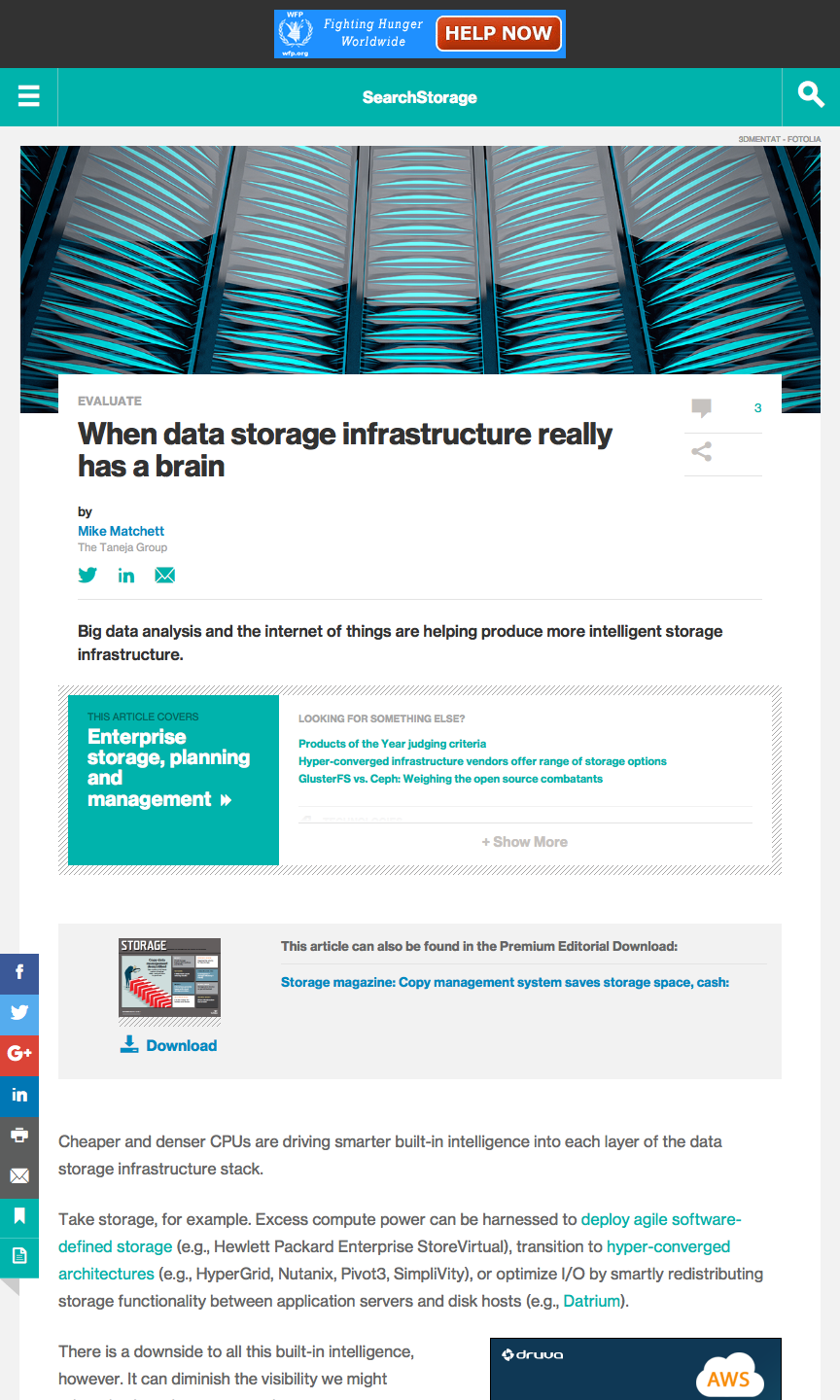When data storage infrastructure really has a brain

An IT industry analyst article published by SearchStorage.
 Big data analysis and the internet of things are helping produce more intelligent storage infrastructure.
Big data analysis and the internet of things are helping produce more intelligent storage infrastructure.
Mike Matchett
Cheaper and denser CPUs are driving smarter built-in intelligence into each layer of the data storage infrastructure stack.
Take storage, for example. Excess compute power can be harnessed to deploy agile software-defined storage (e.g., Hewlett Packard Enterprise StoreVirtual), transition to hyper-converged architectures (e.g., HyperGrid, Nutanix, Pivot3, SimpliVity), or optimize I/O by smartly redistributing storage functionality between application servers and disk hosts (e.g., Datrium).
There is a downside to all this built-in intelligence, however. It can diminish the visibility we might otherwise have between our data storage infrastructure and, well, changes — any IT change, really, whether due to intentional patching and upgrades, expanding usage and users, or complex bugs and component failures. Or, to put it another way, native, dynamic optimization enabled by powerful and inexpensive processors is making it increasingly difficult for us humans to figure out what’s going on with our infrastructures.
So while it’s really great when we don’t need to know any details, and can simply rely on low-level components to always do the right thing, until there is an absolutely autonomous data center — and, no, today’s public cloud computing doesn’t do away with the need for internal experts — IT may find baked-in intelligence a double-edged sword. Furthermore, while smarter data storage infrastructure helps us with provisioning, optimization, growth plans and troubleshooting, it can blind or fool us and actively work against our best efforts to bend infrastructure to our “will.”
Still, in spite of all these potential negatives, given the choice, I’d rather live in a smarter and more autonomous IT world than not (even if there is some risk of runaway AI). I’ll explain.
It’s all about the data
Remember when analysis used to be an offline process? Capture some data in a file; open Excel, SAS or other desktop tool; and weeks later receive a recommendation. Today, that kind of analysis latency is entirely too long and naïve.
Native, dynamic optimization enabled by powerful and inexpensive processors is making it increasingly difficult for us humans to figure out what’s going on with our infrastructures.
Given the speed and agility of our applications and users nowadays, not to mention bigger data streams and minute-by-minute elastic cloud brokering, we need insight and answers faster than ever. This kind of intelligence starts with plentiful, reliable data, which today’s infrastructures are producing more and more of every day (in fact, we’ll soon be drowning in new data thanks to the internet of things [IoT]), and a way to process and manage all that information.
Storage arrays, for example, have long produced insightful data, but historically required vendor-specific, complex and expensive storage resource management applications to make good use of it. Fortunately, today, there are a series of developments helping us become smarter about IT systems management and better (and faster) users of data generated by our infrastructures: …(read the complete as-published article there)
